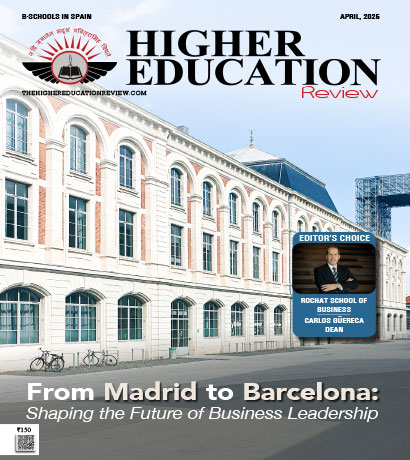The Need for UDL Principles in Higher Education for the Digitally Native Learner

Tannistho Ghosh, AGM - eLearning and New Business Initiatives Manipal Digital Systems
One of my professor-friend was recently complaining about the lack of attention span of his students. 'They just jump to conclusions, skip steps and ask off hand questions' was the statement. 'Do they check out your topic on cellphones?' I had asked. 'Well yes, right before the class starts', he had said.
As a professional, I deal with adult learners all the time. Even though most of them are inductees in corporate, a large part of them are millennials who have grown up with Google as their companion. I could totally relate to what he was saying. The challenge that he was grappling with was not limited to higher education institutions but was also faced by organizations that had a large group of employees who were digital natives. How do you deal with digital citizens who skip the textbook and look for easier solutions not because they like to, but they have are used to since they were in school? For the professors, at least some of them, who grew up in a different generation the expectation gap is quite large.
I believe the answer to solving this does not lie in academia but in the world of marketing - where marketers are using all kinds of data to map insights about the new generation of digital natives. For example, a food joint trying to market to digital citizens knows the value that the social network presents to this generation, FMCG brands understand the need to get their attention through games and entertainment brands like Netflix understand that a plain jane horror story needs to be set in a dystopian world to create the right impact. But, is academia paying attention to the changing attention builders?
When we think about the modern classroom, several new elements have come up, such as digital classrooms. However, technology alone cannot solve a problem that might have deeper roots. You cannot rehash the same schoolbook content in a digital classroom. The message needs to fit the medium as well. This is where the use of 'Universal Design Language' (UDL) comes in. Originally, a part of architecture, UDL came into prominence in the late 1980s as a result of alignment of three conceptual shifts - advancements in architectural design, development of education technology, and discoveries from brain research.
Back in the 1980s, brain imaging conducted while people were engaged in learning tasks such as reading or writing revealed that three networks were at work during learning - the recognition network (the what of learning), the strategic network (the how of learning) and affective network (the why of learning). Parallel to that, UDL in architecture had come to a point where retrospective thinking about making buildings accessible was being replaced by incorporating universal accessibility in the design itself. The same thinking was incorporated in learning design as digitized text opened up other avenues of reaching out to students.
Universal Design Language framework has a simple goal to 'teach every student'. But, learning styles differ, just like ability to comprehend differs from student to student. This is where technology benefits UDL the most. According to UDL principles, each area of curriculum should provide multiple, varied and flexible options for representation, engagement and expression.
UDL Principles
1. Principle 1: Provide multiple means of representation
2. Principle 2: Provide multiple means of action and expression
3. Principle 3: Provide multiple means of engagement
This is where the use of digital classrooms, games, mobile apps, social learning, elearning, immersive learning can come to maximum use. However, technology remains an enabler and to bring UDL to higher education, one needs to think about fundamental ways about how the curriculum is presented and the outcome measured.
This will mean relooking at the textbook, measuring the flow of the content and distributing the content into multiple forms of representation (for example, a business theory can be broken down into a a simulation, an animated video and a mobile app driven game that presents users with multiple scenarios to test it out.).
The benefit of UDL is that is purely outcome based, and therefore does not leave any stone unturned to reach out to its audience. Secondly, multiple means of engagement ensures that the sum of all its parts much larger than the whole.
However, implementing UDL would also mean thinking like the digital native and viewing technology from a perspective that catches their attention the most, and that's an interesting task to handle.
Tannistho Ghosh
Tannistho holds a Masters degree in Literature and a PG Diploma in Mass Communications. Over the last 15 years, he has worked on several communication projects for brands like Unicef, Star TV, ITC, and others. A trained Learning Designer, he has also developed several elearning programs for organizations like Mckinsey & Co, OrangeUK, Florida Virtual School, DPR Construction, Save the Children and others. In his present role, he heads the eLearning and New Initiatives Vertical at Manipal Digital Systems.
As a professional, I deal with adult learners all the time. Even though most of them are inductees in corporate, a large part of them are millennials who have grown up with Google as their companion. I could totally relate to what he was saying. The challenge that he was grappling with was not limited to higher education institutions but was also faced by organizations that had a large group of employees who were digital natives. How do you deal with digital citizens who skip the textbook and look for easier solutions not because they like to, but they have are used to since they were in school? For the professors, at least some of them, who grew up in a different generation the expectation gap is quite large.
I believe the answer to solving this does not lie in academia but in the world of marketing - where marketers are using all kinds of data to map insights about the new generation of digital natives. For example, a food joint trying to market to digital citizens knows the value that the social network presents to this generation, FMCG brands understand the need to get their attention through games and entertainment brands like Netflix understand that a plain jane horror story needs to be set in a dystopian world to create the right impact. But, is academia paying attention to the changing attention builders?
When we think about the modern classroom, several new elements have come up, such as digital classrooms. However, technology alone cannot solve a problem that might have deeper roots. You cannot rehash the same schoolbook content in a digital classroom. The message needs to fit the medium as well. This is where the use of 'Universal Design Language' (UDL) comes in. Originally, a part of architecture, UDL came into prominence in the late 1980s as a result of alignment of three conceptual shifts - advancements in architectural design, development of education technology, and discoveries from brain research.
Back in the 1980s, brain imaging conducted while people were engaged in learning tasks such as reading or writing revealed that three networks were at work during learning - the recognition network (the what of learning), the strategic network (the how of learning) and affective network (the why of learning). Parallel to that, UDL in architecture had come to a point where retrospective thinking about making buildings accessible was being replaced by incorporating universal accessibility in the design itself. The same thinking was incorporated in learning design as digitized text opened up other avenues of reaching out to students.
Universal Design Language framework has a simple goal to 'teach every student'. But, learning styles differ, just like ability to comprehend differs from student to student. This is where technology benefits UDL the most. According to UDL principles, each area of curriculum should provide multiple, varied and flexible options for representation, engagement and expression.
UDL Principles
1. Principle 1: Provide multiple means of representation
2. Principle 2: Provide multiple means of action and expression
3. Principle 3: Provide multiple means of engagement
This is where the use of digital classrooms, games, mobile apps, social learning, elearning, immersive learning can come to maximum use. However, technology remains an enabler and to bring UDL to higher education, one needs to think about fundamental ways about how the curriculum is presented and the outcome measured.
This will mean relooking at the textbook, measuring the flow of the content and distributing the content into multiple forms of representation (for example, a business theory can be broken down into a a simulation, an animated video and a mobile app driven game that presents users with multiple scenarios to test it out.).
The benefit of UDL is that is purely outcome based, and therefore does not leave any stone unturned to reach out to its audience. Secondly, multiple means of engagement ensures that the sum of all its parts much larger than the whole.
However, implementing UDL would also mean thinking like the digital native and viewing technology from a perspective that catches their attention the most, and that's an interesting task to handle.
Tannistho Ghosh
Tannistho holds a Masters degree in Literature and a PG Diploma in Mass Communications. Over the last 15 years, he has worked on several communication projects for brands like Unicef, Star TV, ITC, and others. A trained Learning Designer, he has also developed several elearning programs for organizations like Mckinsey & Co, OrangeUK, Florida Virtual School, DPR Construction, Save the Children and others. In his present role, he heads the eLearning and New Initiatives Vertical at Manipal Digital Systems.

